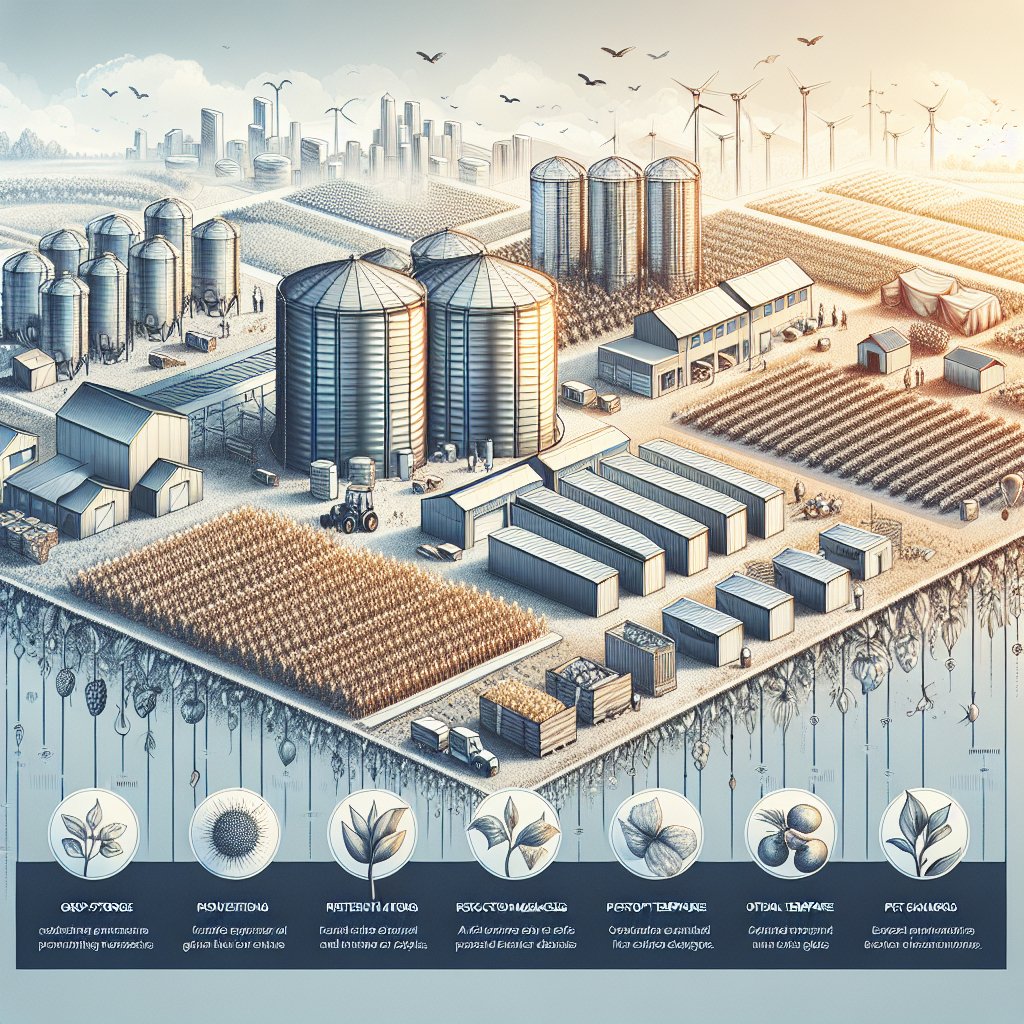
Effective crop storage is crucial for reducing post-harvest losses and ensuring food security. As the global population continues to grow, the demand for food increases, making it essential to minimize waste and maximize the efficiency of agricultural production. Proper storage techniques not only help in preserving the quality and quantity of crops but also play a significant role in maintaining the economic stability of farming communities. This article explores some of the best crop storage tips that can significantly reduce post-harvest losses.
Understanding Post-Harvest Losses
Post-harvest losses refer to the degradation in both quantity and quality of food from the time of harvest until it reaches the consumer. These losses can occur at various stages, including during handling, storage, processing, and transportation. The causes of post-harvest losses are multifaceted, involving biological, environmental, and socio-economic factors.
Biological factors include pests, diseases, and the natural respiration of crops, which can lead to spoilage. Environmental factors such as temperature, humidity, and exposure to light can also affect the shelf life of crops. Socio-economic factors involve inadequate infrastructure, lack of access to technology, and insufficient knowledge about proper storage practices.
Understanding these factors is the first step in developing effective strategies to reduce post-harvest losses. By addressing the root causes, farmers can implement targeted solutions that enhance the longevity and quality of their produce.
Best Practices for Crop Storage
Proper Drying Techniques
One of the most critical steps in crop storage is ensuring that the produce is adequately dried before storage. Moisture is a primary contributor to spoilage, as it creates an environment conducive to the growth of mold and bacteria. Different crops require specific drying methods, and understanding these requirements is essential for effective storage.
- Natural Sun Drying: This traditional method involves spreading crops under the sun. While cost-effective, it requires careful monitoring to prevent over-drying and exposure to pests.
- Mechanical Drying: Using machines to dry crops can be more efficient and controlled. It allows for drying in adverse weather conditions and reduces the risk of contamination.
Regardless of the method used, it is crucial to ensure that crops are dried to the appropriate moisture content specific to each type of produce.
Temperature and Humidity Control
Maintaining optimal temperature and humidity levels is vital for preserving the quality of stored crops. High temperatures can accelerate the respiration rate of produce, leading to faster spoilage. Similarly, high humidity levels can promote mold growth and attract pests.
- Temperature Control: Using insulated storage facilities or refrigeration can help maintain a stable temperature. For some crops, such as grains, cool and dry conditions are ideal.
- Humidity Control: Dehumidifiers and proper ventilation systems can help regulate humidity levels. It is also important to monitor these conditions regularly to prevent any fluctuations that could harm the stored produce.
Pest and Disease Management
Pests and diseases are significant contributors to post-harvest losses. Implementing effective pest management strategies is essential for protecting stored crops.
- Regular Inspection: Conducting routine checks for signs of pest infestation or disease can help in early detection and intervention.
- Use of Natural Predators: Introducing natural predators or beneficial insects can help control pest populations without the need for chemical pesticides.
- Sanitation Practices: Keeping storage areas clean and free from debris can reduce the risk of pest infestations. Proper disposal of infected or damaged produce is also crucial.
Innovative Storage Solutions
Advancements in technology have led to the development of innovative storage solutions that can significantly reduce post-harvest losses.
- Hermetic Storage Bags: These airtight bags prevent the entry of air and moisture, effectively protecting grains from pests and spoilage.
- Controlled Atmosphere Storage: This method involves adjusting the levels of oxygen, carbon dioxide, and nitrogen to slow down the respiration rate of produce, extending its shelf life.
- Smart Storage Systems: Utilizing sensors and IoT technology, smart storage systems can monitor and adjust environmental conditions in real-time, ensuring optimal storage conditions.
Conclusion
Reducing post-harvest losses is a critical component of sustainable agriculture. By implementing effective crop storage techniques, farmers can preserve the quality and quantity of their produce, contributing to food security and economic stability. Understanding the factors that contribute to post-harvest losses and adopting best practices in drying, temperature and humidity control, pest management, and innovative storage solutions can make a significant difference. As the agricultural sector continues to evolve, embracing these strategies will be essential for meeting the growing global demand for food.

